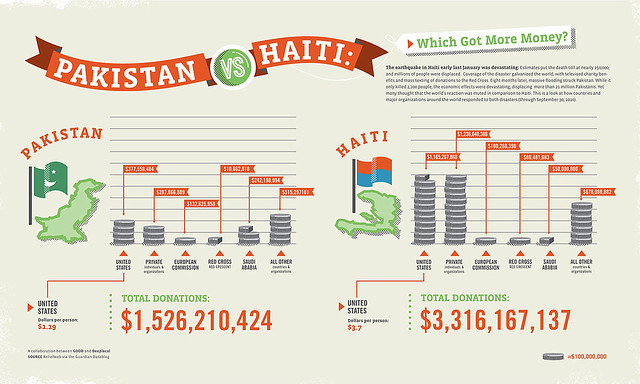Remember the earthquake in Haiti? Of course you do, and there’s a good chance you donated money to relief efforts. Now, remember the flooding in Pakistan? Maybe, since it was just last summer, but did you also give to it? Chances are you didn’t. In fact, not nearly as many people did. Just take a look at this new infographic from Good magazine that compares donations—both individual and organizational—for the two disasters.

Another theory, spelled out in a recent New York Times article, is that people give more to immediate, quick-hitting disasters, such as an earthquake or tsunami. We can see the crumbled buildings; it all happens at once. Whereas a slow-building disaster, such as a flood, occurs over weeks and months. By the time a final tally of the human and economic toll is available, our attention has moved on.
Five weeks after the Haiti earthquake, 48 aid groups polled by The Chronicle of Philanthropy had collected three-quarters of a billion dollars. Five weeks after the flooding in Pakistan, a similar poll found 32 aid groups had collected just $25 million.In all, $3.4 billion has been collected for the victims of the Haiti earthquake as of October, with more than $1.1 billion coming from private donations, according to figures compiled by the United Nations. Close to $1.7 billion has been pledged for Pakistan, but less than $300 million came from private donors. The United States government pledged almost one-third of the total.Humanitarians have long struggled with this paradox. The number of dead, along with the swiftness and drama of their demise, trumps almost any amount of agony among those who survive a disaster, particularly a creeping one. [emphasis mine]